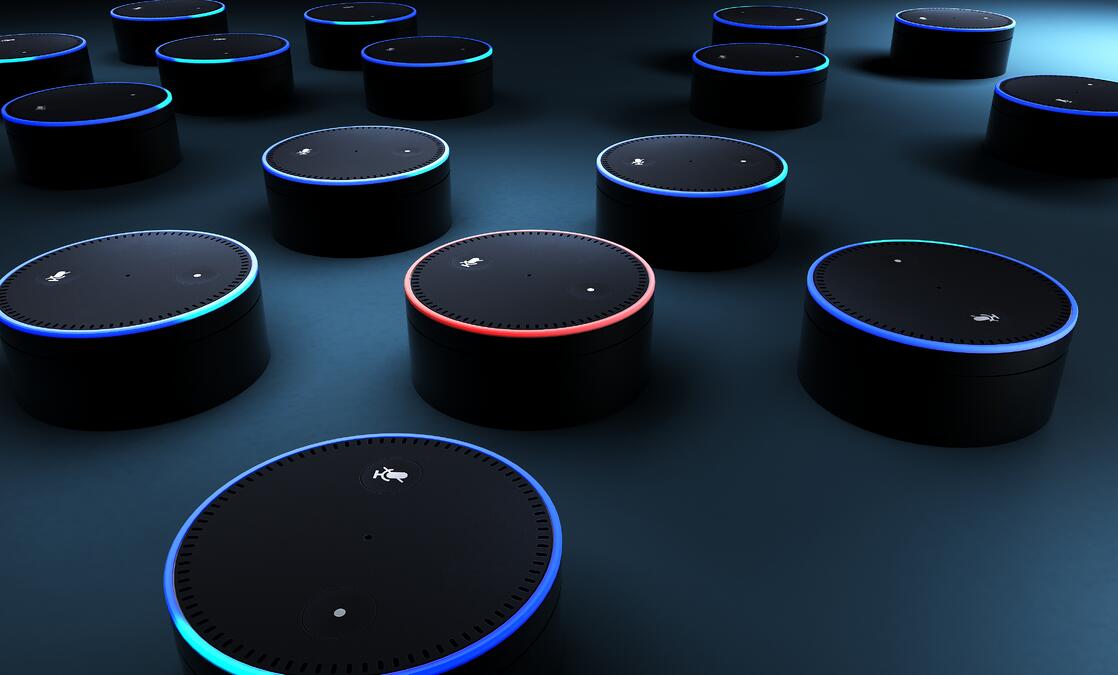
Blog / Being Smart About Smart Devices
Smart devices have been with us for a long time now. Although they only became ubiquitous in the last several years, smart devices can be traced all the way back to 1994 and IBM’s Simon Personal Communicator. That means, from some perspectives, we’ve been living with smart devices for almost 30 years now (27 if you want to be precise).
Flashforward to today and smart devices are everywhere, and not just slick phones either. You can find a smart version of pretty much anything these days, including smart TVs, smart appliances like ovens, refrigerators and toasters, and even smart clothing. We’re not talking about Apple Watches or Google’s infamous eyewear Google Glass either; there are complete business suits that let you swap e-business cards and contact information with colleagues, socks that tell an app where you’re landing on your feet the hardest during a run, and even casual wear that tracks when it’s being worn and rewards you for wearing it out on the town. There’s already LED clothing that can display programmable messages, and it’s only a matter of time until those are connected so you can change what your shirt says from your phone wherever you are.
To be fair, many of these so-called “smart” devices are fun trinkets or inoffensive appliances that are connected to the internet just for the gimmick of being “smart” (we’re looking at you here, toasters—no one has ever needed to change their toast darkness settings remotely). However, it’s important to catch on to what has actually happened. People discovered the value of early, more valuable smart devices and started buying them in droves. Unfortunately, as is usual when new products catch on, everyone went out and bought them without really understanding the implications.
Part of that comes from understanding how these devices operate. The truly useful smart devices (like Amazon’s Alexa or Google’s Nest) operate on voice- and speech-recognition technology to parse sentences and execute commands. In order to accomplish this miracle of modern technology, smart home hubs are equipped with sensitive microphones that are always listening for their wake-up words. This always-on mode of listening is what allows us to interact with these devices on a whim, but it is also where we can run into trouble, sometimes serious.
But why can smart hubs, or any device that is always listening (like a some watches, for example) be such a serious problem? Because they all come with terms and conditions of use that allow them to use the data collected by the hub for improving the service, troubleshooting, and more. As a result, smart home hubs and any smart device with a mic is basically listening in on every conversation you have, including and especially the confidential ones. It is here, at the intersection between convenience and security, that problems once again arise. Having a smart hub in your office can make a lot of sense for improved efficiency and convenience, but it can also represent a real threat to privacy and protected personal information. Although Amazon and Google both assure users that private voice data is ignored, speaking about confidential matters within “earshot” of a hub or other mic-enabled smart device is still, technically, a breach of confidentiality, and that information could be stored indefinitely. To follow this train of thought to its unfortunate conclusion, it’s theoretically possible for you to speak about something confidential around an Alexa hub, Amazon to get hacked, that conversation being compromised, and now some very bad actors have their hands on sensitive information because you technically violated a confidentiality agreement. Admittedly this scenario is hard to imagine happening to Google or Amazon, but there’s also an entire market devoted to the Internet of Things (IoT) and smart devices. The big players aren’t the only ones making smart products these days, and that neat latest gadget could wind up costing you in the long run.
COVID-19 has exacerbated this problem. Even before the pandemic, it was virtually impossible to police every conversation in an office. Now with so many people working from home it’s increasingly likely that someone on your team will say, or has already said, something they shouldn’t have in front of their smart hub. Thankfully it’s also likely that nothing will ever come of it, but it’s always a best practice to plug the hole when it comes to confidential information leaks.
To be clear, we’re not trying to scare you out of connecting your home to a smart hub. We’re big fans of new technology and frankly it can be a lot of fun turning off the lights on your kids while you’re at the office, or preheating your oven from your basement home office. But like many things, there are specific considerations to take into account to determine how you use these devices and where you place them, especially in office settings. Drafting a company policy concerning use of smart devices on premises and based on best practices is a necessary first step, but you should also remind employees, especially those working from home, that their confidentiality obligations do extend to their personal lives. Be careful how you word it though; a simple reminder is likely all they need, and no one really wants their boss telling them how to live outside the office.
Smart hubs and devices are good examples of the breakneck speed that technology evolves at, and are just the latest new convenience it’s added to our work and home lives. Still, it’s always important to remember the limitations and possible vulnerabilities they may introduce to your organization. If you’d like help securing your smart devices or developing a company policy to address smart hubs, please contact your TRINUS account manager or drop us a message.
Sincerely,
The TRINUS team

















